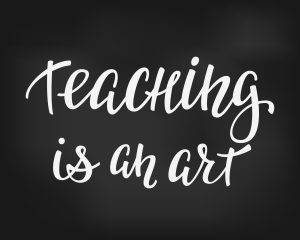You know that moment when you sit through a professional development session, and the presenter excitedly introduces a “brand-new, research-backed strategy”—only for you to realize you’ve been using it for the past 20 years? But now, because someone put a fancy name on it and packaged it into a training, it’s suddenly revolutionary.
Veteran teachers have seen this before. Again. And again. And again.
Self-Regulation: A Trend That’s Actually 30 Years Old
Back in the ’90s, when I was teaching in the Fort Worth School District, I had a simple expectation: we all behaved like civilized human beings. My students even came up with a designated “spot” in the room where they could step away to calm down, refocus, or just get a little quiet time.
They didn’t call it “self-regulation.” I didn’t frame it as supporting their “emotional well-being.” And I definitely didn’t offer a reward for re-entering the group.
Fast forward 30 years, and now “teaching self-regulation” is the hottest thing in education. If only I had trademarked it—I could have been rich!
The Rebranding Game: Old Wine, New Bottle
Education loves a good cycle. Strategies come, go, get rebranded, and then come back again with a shiny new name. Remember when cooperative learning was the next big thing? Or when growth mindset was supposed to change everything? And now, we’re watching assertive discipline—complete with token economies and elaborate incentive systems—make yet another grand entrance, as if it’s something fresh off the innovation shelf.
Alfie Kohn put it best in Punished by Rewards (1993):
“There is something profoundly wrong-headed about this doctrine – that its assumptions are misleading and the practices it generates are both intrinsically objectionable and counterproductive. [It] … usually fails to produce the consequences we intended…”
One of the biggest frustrations for teachers? Sending a disruptive student to the office, only to have them return with a sucker. What message does that send to the students who were doing the right thing all along?
Good Teachers Have Always Known What Works
Here’s the thing: Good teachers have always used effective methods, not because they were the latest trend, but because they worked. Teachers are constantly searching for the right approach, technique, or tool to increase learning, engage students, and foster positive classroom communities. These approaches evolve daily as great teachers continually work to make learning meaningful and relevant, all while creating a safe space where every student can thrive. They figure this out long before any consultant, business, or politician adds a trademark or mandate to it.
The Problem with the Trend Cycle
The problem? Every time education jumps on a new bandwagon, we risk losing sight of what truly matters: strategies that work in real classrooms, with real students, taught by real teachers—without the fanfare, buzzwords, or the need to rebrand best practices every five years. Veteran teachers understand this, but are often overlooked for the very work they’ve been doing all along. They’re not out there bragging about their methods; they’re simply in the classroom, quietly making a difference.
Teaching Is About Dedication, Not Trends
In the end, teaching is about far more than the latest trend or flashy program. It’s about the dedication and heart that teachers bring to their students every single day. Veteran teachers have been doing the hard work for years—connecting with kids, making learning meaningful, and creating a space where students can grow. The world may constantly chase after the next big thing, but what truly makes a difference is the unwavering commitment to what works, to what’s proven, and to the relationships we build. Keep doing what you know is right. Your impact lasts far longer than any passing trend.


